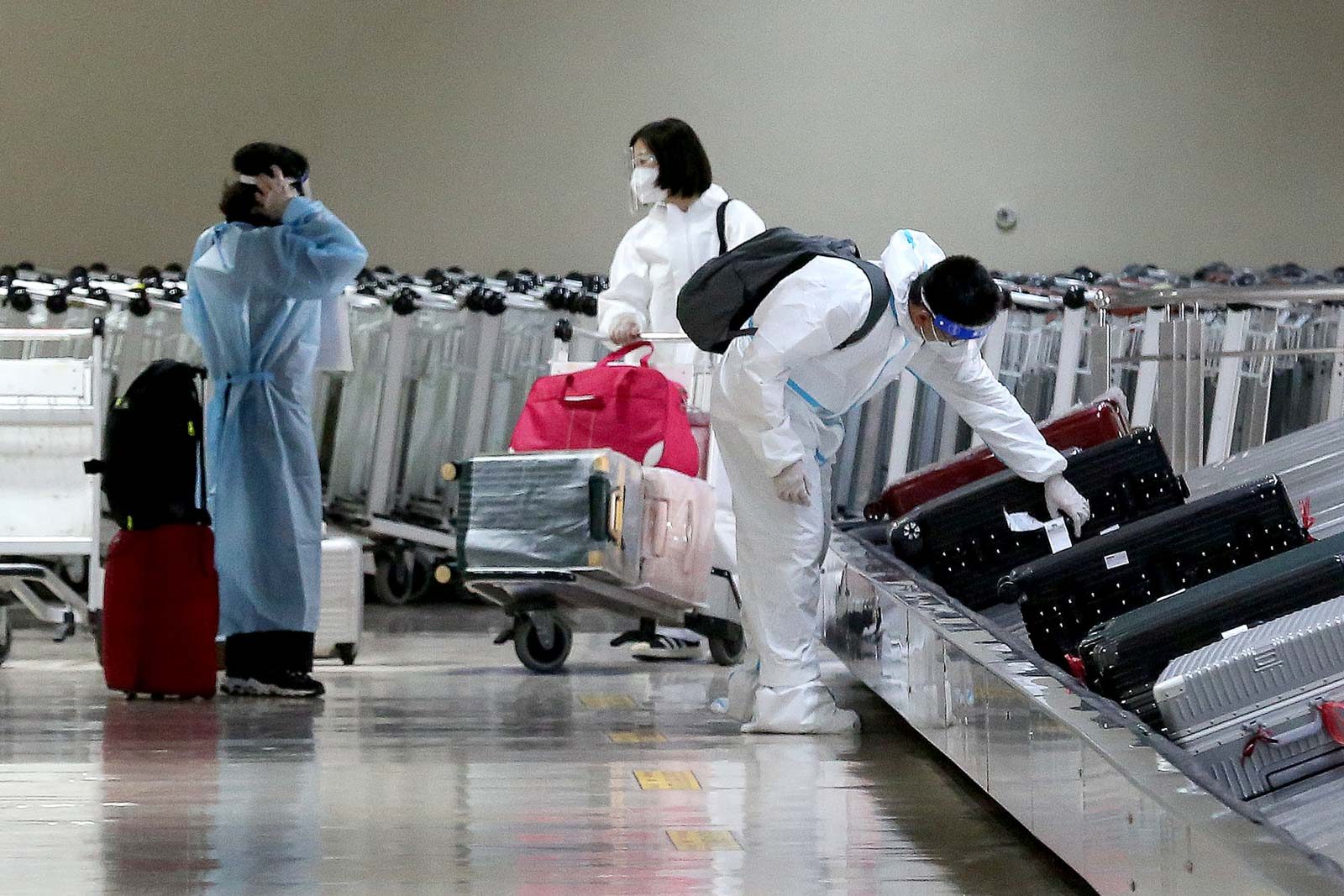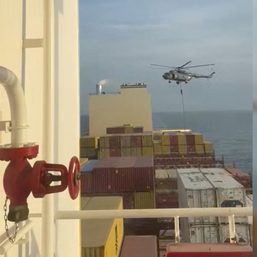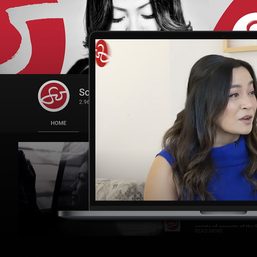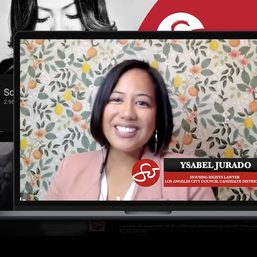SUMMARY
This is AI generated summarization, which may have errors. For context, always refer to the full article.

When Elmer*, a public health worker, landed in Metro Manila from the United States on October 8, he was all set to quarantine in a facility managed by his local government unit (LGU). A stay in an accredited hotel would have been costlier.
He presented an endorsement letter from his city, allowing him to do so, but government officials at the airport told him he could not do that.
He was told to book with a hotel, and then to apply for a transfer from his hotel to his city’s quarantine center. He reached out to personnel of the Bureau of Quarantine (BOQ) to facilitate this, but was ignored.
The day he arrived, the government’s new quarantine rule also took effect, mandating that fully vaccinated travelers be tested on the fifth day of isolation. At the hotel, however, he was told he’d have to wait until the seventh day.
Worse, the vaccination card issued by Elmer’s LGU and his VaxCert – a sort of vaccine passport issued by the Philippines’ own Department of Health and Department of Information and Communication Technology and recognized abroad – was not honored by the government’s One Health Pass system.
On the seventh day of isolation, when Elmer was supposed to get tested, workers from the testing center informed him his name had been missing from the BOQ’s list of travelers to be tested on that day. He would have to wait to be swabbed the following morning.
“It’s frustrating. It’s not a joke. It’s the pandemic. People are getting sick,” Elmer told Rappler. Before leaving for the US for medical reasons and to see his family, he had made it a point to ensure he could complete his mandatory quarantine in an LGU facility. He wasn’t just after saving money, he also wanted to return to work in his public health center smoothly.
Due to the Philippine government’s confusing guidelines, however, Elmer ended up shelling out an initial P34,000 for his quarantine hotel and RT-PCR test, P6,500 of which was reimbursed by his hotel. Instead of cutting costs, he had no choice but to spend a total of P27,500.
As a health worker, Elmer said he understood the need to observe quarantine. His frustration stemmed from the government’s last-minute changes to quarantine rules, which seemed unclear to officials on the ground in airports.
His ordeal stemmed from the decision of the government’s coronavirus task force to pass a resolution on October 7, shortening the quarantine for passengers who were fully vaccinated. The new rules were supposed to take effect as early as October 8, according to Malacañang.
Elmer also questioned why returning Filipinos could not be allowed to quarantine in LGU-managed facilities, which were often free.
“I don’t mind that this is the national policy. I will follow it. But what really frustrates me is the [lack of] synchronicity in how policies are being implemented. It’s really an inconvenience,” he said.
‘Eye opener’
Elmer’s situation arriving in the Philippines punctuated the exhaustion he’d felt over the past year working in the public health sector. As a physician in a local health center, he needed to carry out multiple roles, including assisting in the government’s COVID-19 vaccine drive, treating patients in his community for both COVID-19 and non-COVID-19 illnesses, as well as doing administrative duties.
“What happened to me was really an eye-opener. There are a lot of alternatives, free alternatives for people – why don’t we use that? It’s really frustrating. Like hotels, some say [quarantine] is a way for the hotels to keep their businesses open, but the government should at least subsidize it or give incentives,” he said. “It’s really hard here in the Philippines if you don’t have money.”
Facilitating repatriations and monitoring the arrival of thousands of returning Filipinos and travelers had, early on, been one of the biggest challenges for the Philippines.
In 2020, as 14-day quarantines were still mandated, delays and inefficiencies in testing and processing documents forced thousands of overseas Filipino workers (OFWs) to remain in isolation beyond two weeks, costing the government millions. In recent months, a shortage of quarantine facilities also partly resulted in limiting the number of overseas Filipinos who could come home at a given time.
Meanwhile, officials have struggled to find a sweet spot in implementing quarantine rules that could both control and monitor the spread of the virus and keep government from running out of funds.
Vaccinations not recognized
Like Elmer, Amy* left the Philippines to visit her elderly parents in the US. Arriving in Manila on October 10 was like hitting a wall after her LGU-issued vaccine card was not accepted by officials at the airport.
Away from the country since September 2021, Amy only learned of the government’s new VaxCert when she arrived.
“I only had my Manila City vaccine card, but when he (government official) [tried to] scan it, they couldn’t scan it, so I needed to quarantine to be swabbed on the seventh day, rather than on the fifth day. Why don’t they accept the vaccine card from city hall?” Amy asked.
This meant Amy needed to spend an extra P9,000 to extend her quarantine despite new rules allowing fully-vaccinated travelers in the Philippines to observe shorter quarantine.
“But what can we do? The IATF’s protocols keep changing, they’re so muddled. So it’s easier for me to patiently wait,” she said in a mix of English and Filipino.
Trying to navigate the Philippine government’s quarantine rules has been confusing enough for OFWs, many of whom have continued to take to Facebook groups to share advice and help answer one another’s questions.
In a Facebook group of OFWs from Saudi Arabia, workers complained the Philippines did not recognize, as of October 12, individuals who had taken two doses of different vaccine brands as fully vaccinated. Saudi Arabia is among the few countries in the world that have allowed people to mix vaccines after authorizing it in June 2021.
Other OFWs also complained about the lack of coordination between Philippine officials in their host countries and in Manila. Some workers who arrived on October 13 from Saudi Arabia said officials from the Overseas Workers Welfare Administration (OWWA) required them to present vaccination cards validated by their Philippine Overseas Labor Offices to avail themselves of shortened quarantine, although their POLO office in Riyadh said otherwise.
Meanwhile, other retuning Filipinos from the US likewise expressed frustration over the government’s unclear rules after their vaccination cards from the US and international vaccine certificates were not honored in Manila.
Lawmakers earlier urged the government to find a “middle ground” in implementing quarantine rules so that Filipinos do not need to spend thousands, and to respond to pleas from OFWs who felt they were “being discriminated” against upon their return home.
Boiling point
To Elmer, the lack of clear guidelines understood by all officials in government is costly, especially for Filipinos who have depleted their savings or may have lost their jobs. Shorter quarantine periods cleared by health officials, he added, bring relief to many Filipinos who have waited months for a chance to return home.
“Even if you say it’s ‘only P6,000,’ it is still P6,000 or P10,000 – especially for people who come back here and don’t have any assurance of a job when they come back,” he said. Elmer recalled hearing friends and relatives in the US say they wanted to visit their family in the Philippines, but could not afford to quarantine.
“There are so many people who want to come back and visit their relatives and it’s sad some weren’t able to attend funerals of their relatives, and they told me that because of these guidelines, it’s really costly. I don’t blame them,” he said.
In recounting his ordeal, Elmer lamented how the difficulty of coping with quarantine protocols – just one aspect of the government’s pandemic response – prompted him to question whether he still wanted to work in the public sector. He recalled how many of his colleagues told him to find work in the US, similar to other Filipino health workers, rather than return to the Philippines.
“Is it worth it? That is the cry of so many doctors…. Until when do we need to suffer?” he said in Filipino.
Frustrated by the national government’s handling of quarantine protocols, Elmer said his experience only made him more resolute to share with others “the importance of government, the importance of our policies.”
“I want people to learn from the experience of not only me as a doctor, but the ordeal of people coming back here to the Philippines,” he said.
“We are doctors and sometimes we say we should be apolitical or we should just take no sides…. [But] being a physician is not just being a clinician. In medical school, I was told you need to be a five-star physician – meaning, you need to be a clinician, a researcher, a manager, and educator, and now, during this time of the pandemic and uncertainty, we doctors, we really need to be social mobilizers.” – Rappler.com
*Names have been changed upon request.
Add a comment
How does this make you feel?





There are no comments yet. Add your comment to start the conversation.